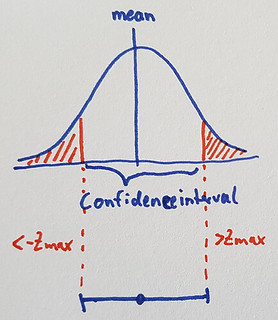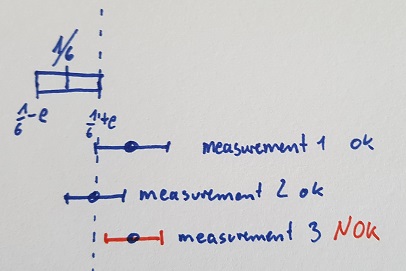cornixt, I tried a float test after your suggestion.
What i find is that the side floats on top that was first on top. I can turn the die, he will float with another side on top afterwards.
One exception is, when there it was catching air in the pips, then the side with the air in the pips got up.

I tried with three dice that displayed both a beautiful air bubble inside and a skewed distribution.

Whitebeard, yes that one seems to be weighted. Or the five is a little bit round to the outside and the two is a little bit round to the inside. Sadly that was a white die so i can't take easily a photo showing the side deformation like with the colored dice.
I was pondering a bit about your suggestion of calculating more standard deviations.
I found my standard deviation function for a perfect die by letting excel rolling 10 000 000 times the dice with a near perfect randomness and then doing a regression analysis of the results. I would say it's the beginner's method.

The standard deviation of a normal die should be 0.906 * sqrt(average) whereas the "average" is simply the number of times one side *should* have appeared. So if you roll 6 times, it the average is 1, if you roll 12 times, the average is 2... and so on.
To repeat this for several off-values seems a bit tedious.
Currently i am trying this:
Take the experimental data. If the result is above average, reduce by 5%. If it is below average, add 5%. Then calculate Z like before.
- If the die shows less than 5% irregularity, it looks like a perfect die for the Z calculation
- If t the die shows more than 5% irregularity, it looks like a 5% better die for the Z calculation.
The method has the advantage that everybody may put the threshold where he wants (for example, you on 10%, me on 5%)
Plus i took your suggestion and used the Z value for a comparison with a confidence interval.
From that interval, i derive the Z Value that is the threshold for "right" or "wrong" and translate it directly to a visible decision on the excel sheet.
Advantage 2, i can enter any confidence intervals i would like.
With 5% failure accepted and 95% confidence, there are 13 dice broken.
With 5% failure accepted and 90% confidence, there are 19 dice broken.
With 5% failure accepted and 80% confidence, there are 28 dice broken.
With 10% failure accepted and 95% confidence, there are 7 dice broken.
With 10% failure accepted and 90% confidence, there are 13 dice broken.
With 10% failure accepted and 80% confidence, there are 19 dice broken.
i am happy with that sheet now.
Now i have to bring it into a publishable format for you guys. I mean. Not that i think you would use it, to be honest.



